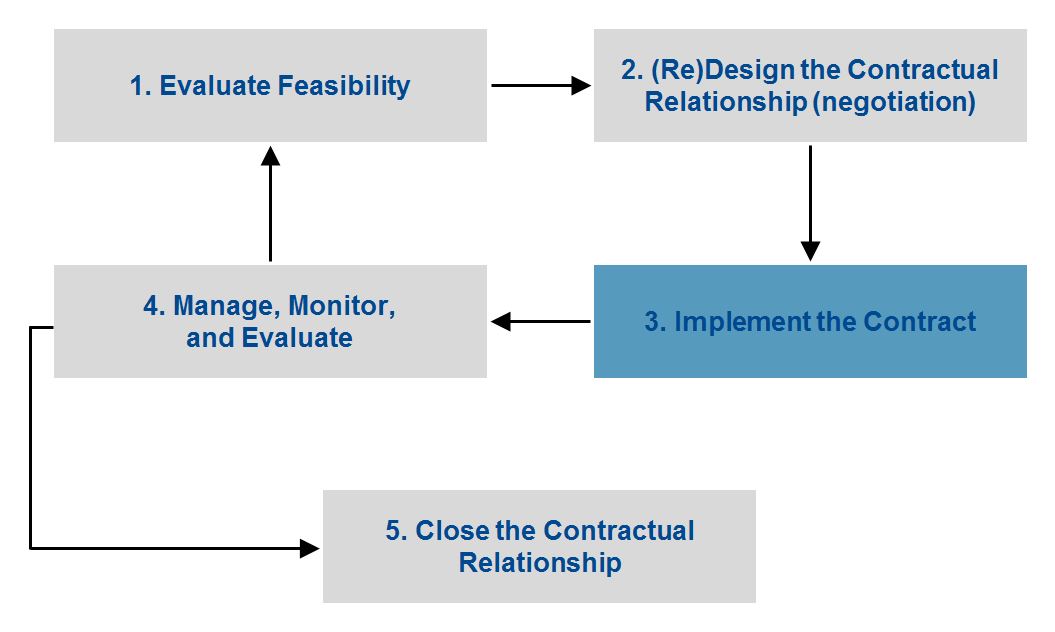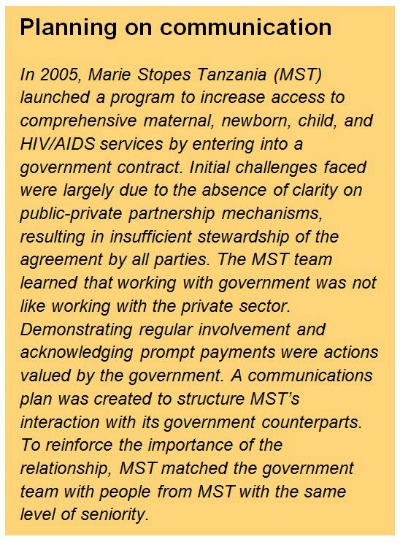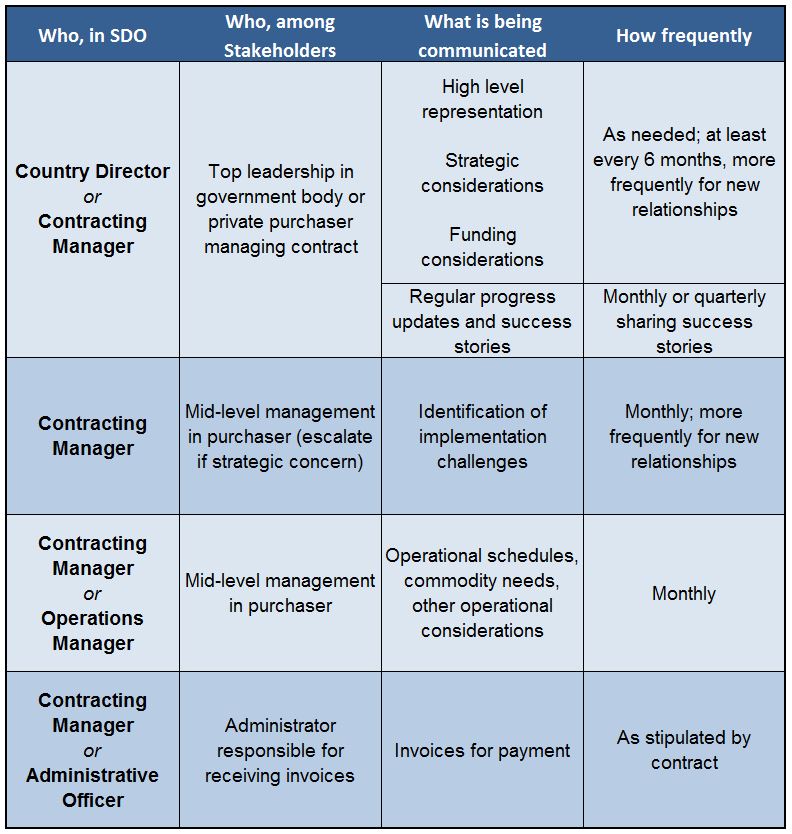Stage Three: Implement the Contract

To implement contracts to provide family planning services, SDOs must train staff to perform new monitoring, reporting, and billing processes and ensure that they have adequate resources, including the staff, supplies, and equipment required to provide the services. Other operational components are established, such as a dispute resolution and a communication plan
- 3.1 How should I prepare to manage a contract once it is established?
- 3.2 What is a communication plan? Why is this important?
3.1 How should I prepare to manage a contract once it is established?
 Relationship management begins with the proposal process but is essential through the contracting lifecycle. Often the investment of time and potential payoff of good relationships (or consequences of poor relationships) in contracting are underestimated. The SDO should in all cases designate someone to be the responsible focal point for a contract relationship. The relationship manager should be a good communicator and well-versed in the contract but need not manage all aspects of the contract. Moreover, a relationship manager may not be the same person during the proposal and contracting phases of the contract lifecycle, as some but not all of the skills needed to evaluate and negotiate contracts will be the same as those needed to implement and oversee contracts.
Relationship management begins with the proposal process but is essential through the contracting lifecycle. Often the investment of time and potential payoff of good relationships (or consequences of poor relationships) in contracting are underestimated. The SDO should in all cases designate someone to be the responsible focal point for a contract relationship. The relationship manager should be a good communicator and well-versed in the contract but need not manage all aspects of the contract. Moreover, a relationship manager may not be the same person during the proposal and contracting phases of the contract lifecycle, as some but not all of the skills needed to evaluate and negotiate contracts will be the same as those needed to implement and oversee contracts.
Common challenges that arise in relationship management include:
- Low trust or acceptance of partners, especially between the public and private sector
- Concerns about non-transparency in how contracts are awarded
- Unrealistic expectations about what contracting will achieve, coupled with inadequate resources for achieving objectives
- Turnover and reassignment of government officials (staff positions)
- Decentralized decision making on paper but not in practice
At the inception of the contract, an induction meeting should be held for key stakeholders and recur on an as-needed basis. The induction meeting sets the stage for the ongoing relationship and is an opportunity to reinforce the big picture (objectives, potential of the contracting relationship), as well as to focus on executional details: roles and responsibilities, monitoring progress, and problem solving. Remember to celebrate successes and achievements and to highlight the value that the SDO brings to the relationship, in the beginning and ongoing. A communication plan is recommended to create a common roadmap for relationship management.
3.2 What is a communication plan? Why is this important?
A communication plan provides a roadmap to manage a contractual relationship. The plan sets forth roles and responsibilities and a structure for contract parties to communicate. It should specify who will generate and receive the communication; the purpose of the communication; its means (meeting, telephone, in-writing, and so on) and frequency (e.g., monthly, biannually, as needed, and so on) to support accountability; and transparency in relationship management.
Table 3. Sample communications plan for an SDO
